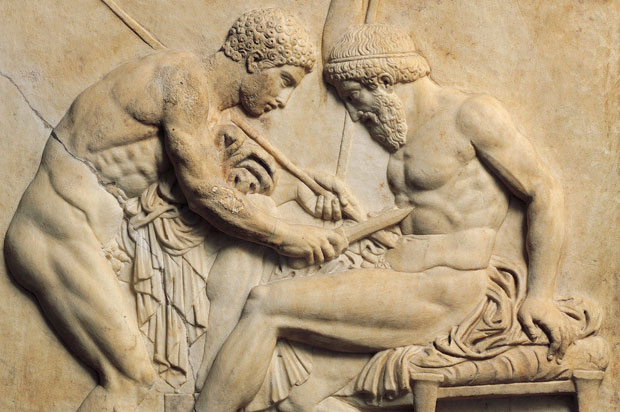The Western Roman Empire may have fallen more than 1,500 years ago, but its rich legacy of innovation and invention can still be seen today. The Romans were prodigious builders and expert civil engineers, and their thriving civilization produced advances in technology, culture and architecture that remained unequaled for centuries. From aqueducts to newspapers, find out more about 10 innovations that built ancient Rome.
10.Battlefield Surgery

The Romans invented many surgical tools and pioneered the use of the cesarean section, but their most valuable contributions to medicine came on the battlefield. Under the leadership of Augustus, they established a military medical corps that was one of the first dedicated field surgery units. These specially trained medics saved countless lives through the use of Roman medical innovations like hemostatic tourniquets and arterial surgical clamps to curb blood loss. Roman field doctors also performed physicals on new recruits and helped stem the spread of disease by overseeing sanitation in military camps. They were even known to disinfect instruments in hot water before use, pioneering a form of antiseptic surgery that was not fully embraced until the 19th century. Roman military medicine proved so advanced at treating wounds and promoting wellness that soldiers tended to live longer than the average citizen despite constantly facing the hazards of combat.
9.The Twelve Tables and the Corpus Juris Civilis

Subpoena, habeas corpus, pro bono, affidavit—all these terms derive from the Roman legal system, which dominated Western law and government for centuries. The basis for early Roman law came from the Twelve Tables, a code that formed an essential part of the constitution during the Republican era. First adopted around 450 B.C., the Twelve Tables detailed laws regarding property, religion and divorce and listed punishments for everything from theft to black magic. Even more influential than the Twelve Tables was the Corpus Juris Civilis, an ambitious attempt to synthesize Rome’s history of law into one document. Established by the Byzantine emperor Justinian between 529 and 535 A.D., the Corpus Juris included modern legal concepts such as the notion that the accused is innocent until proven guilty. After the fall of the Roman empire, it became the basis for many of the world’s legal systems. Along with English common law and sharia law, Roman law remains hugely influential and is still reflected in the civil laws of several European nations as well as the U.S. state of Louisiana.
8.The Julian Calendar

The modern Gregorian calendar is modeled very closely on a Roman version that dates back more than 2,000 years. Early Roman calendars were likely cribbed from Greek models that operated around the lunar cycle. But because the Romans considered even numbers unlucky, they eventually altered their calendar to ensure that each month had an odd number of days. This practice continued until 46 B.C., when Julius Caesar and the astronomer Sosigenes instituted the Julian system to align the calendar with the solar year. Caesar lengthened the number of days in a year from 355 to the now-familiar 365 and eventually included the 12 months as we know them today. The Julian calendar was almost perfect, but it miscalculated the solar year by 11 minutes. These few minutes ultimately threw the calendar off by several days. This led to the adoption of the nearly identical Gregorian calendar in 1582, which fixed the discrepancy by altering the schedule of leap years.
审校:省略珺 编辑:橘子












